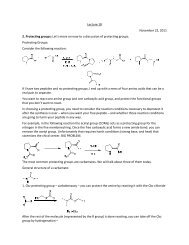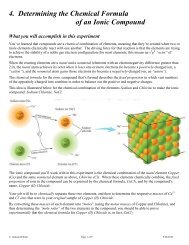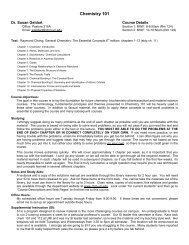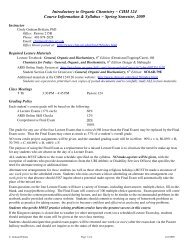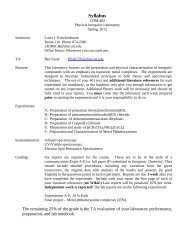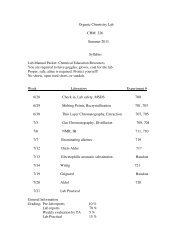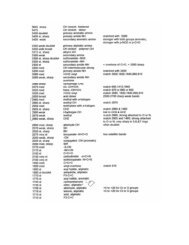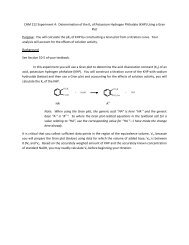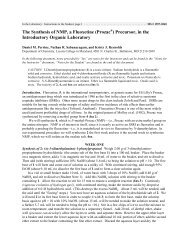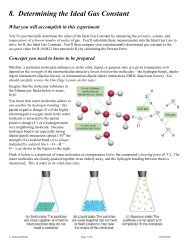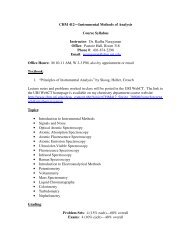Firearm Identification in the Forensic Science Laboratory
Firearm Identification in the Forensic Science Laboratory
Firearm Identification in the Forensic Science Laboratory
You also want an ePaper? Increase the reach of your titles
YUMPU automatically turns print PDFs into web optimized ePapers that Google loves.
THE EXAMINATION PROCESS<br />
AND TRIAL PREPARATION<br />
WHILE THERE IS no s<strong>in</strong>gle approach to <strong>the</strong><br />
exam<strong>in</strong>ation of firearm evidence, and different laboratory<br />
exam<strong>in</strong>ation protocols exist, <strong>the</strong>re are many th<strong>in</strong>gs<br />
<strong>in</strong> common between forensic laboratories. S<strong>in</strong>ce a particular<br />
exam<strong>in</strong>ation is <strong>in</strong> many ways a custom product<br />
because of <strong>the</strong> variety of firearms evidence and <strong>in</strong>vestigation<br />
scenarios, <strong>the</strong> prosecutor must become familiar<br />
with <strong>the</strong> general laboratory protocols utilized by <strong>the</strong>ir<br />
firearm exam<strong>in</strong>er. The follow<strong>in</strong>g is a general approach<br />
that may be employed <strong>in</strong> an exam<strong>in</strong>ation. It is by no<br />
means a standard that is used by every laboratory <strong>in</strong><br />
every case.<br />
Depend<strong>in</strong>g on <strong>the</strong> needs of <strong>the</strong> <strong>in</strong>vestigation, f<strong>in</strong>gerpr<strong>in</strong>ts,<br />
trace evidence, serological sta<strong>in</strong>s, and o<strong>the</strong>r evidence<br />
issues may have to be resolved prior to <strong>the</strong><br />
handl<strong>in</strong>g of <strong>the</strong> firearm. For example, <strong>the</strong> more important<br />
issue <strong>in</strong> an <strong>in</strong>vestigation may be <strong>the</strong> fact that <strong>the</strong><br />
victim’s blood is <strong>in</strong> <strong>the</strong> barrel of <strong>the</strong> pistol—more important<br />
than <strong>the</strong> comparison between <strong>the</strong> fatal bullet<br />
and <strong>the</strong> barrel.<br />
Hav<strong>in</strong>g resolved o<strong>the</strong>r forensic issues, <strong>the</strong> fired bullets<br />
and cases are exam<strong>in</strong>ed for identifiable toolmarks.<br />
This is especially important <strong>in</strong> <strong>the</strong> evaluation of bullets<br />
that are damaged. If no toolmarks of value are on <strong>the</strong><br />
evidence bullets, an identification cannot be concluded.<br />
However, for some items of evidence, certa<strong>in</strong> class characteristics<br />
of <strong>the</strong> bullet and case may be determ<strong>in</strong>ed.<br />
Details such as <strong>the</strong> bullet weight, bullet dimensions,<br />
composition, manufacture marks, number of lands and<br />
grooves, direction of rifl<strong>in</strong>g twist, and land and groove<br />
impression widths may be recorded and measured. For<br />
cartridge cases <strong>the</strong> caliber, head stamp <strong>in</strong>formation, case<br />
and primer composition, shape and placement of <strong>the</strong><br />
fir<strong>in</strong>g p<strong>in</strong> impression, ejector and extractor marks,<br />
chamber marks, magaz<strong>in</strong>e marks and breech face impression<br />
pattern may be documented. This <strong>in</strong>formation<br />
is <strong>the</strong>n compared with a test-fired bullet and/or cartridge<br />
cases from a firearm that may be l<strong>in</strong>ked to <strong>the</strong><br />
crime scene and/or suspect.<br />
If more than one fired bullet and/or case is to be exam<strong>in</strong>ed,<br />
class and <strong>in</strong>dividual characteristics can be microscopically<br />
compared to determ<strong>in</strong>e whe<strong>the</strong>r or not<br />
<strong>the</strong> bullets or cartridge cases may be identified to each<br />
o<strong>the</strong>r. This process can help determ<strong>in</strong>e <strong>the</strong> potential<br />
number of firearms <strong>in</strong>volved <strong>in</strong> <strong>the</strong> crime. If a firearm<br />
is not available, <strong>the</strong> exam<strong>in</strong>er may be able to produce a<br />
list of potential firearm manufacturers that could have<br />
fired <strong>the</strong> ammunition. This list would be an <strong>in</strong>vestigation<br />
aid, and not <strong>in</strong>clusive of all firearm sources.<br />
Breech face and fir<strong>in</strong>g p<strong>in</strong> marks on two cartridge<br />
cases produced by two similar, but different pistols.<br />
The striated marks on both are due to movement of<br />
<strong>the</strong> barrel after fir<strong>in</strong>g and prior to cartridge case<br />
ejection. These marks are described as “fir<strong>in</strong>g p<strong>in</strong><br />
aperture shear.”<br />
2 6 F I R E A R M I D E N T I F I C AT I O N I N T H E F O R E N S I C S C I E N C E L A B O R AT O RY




